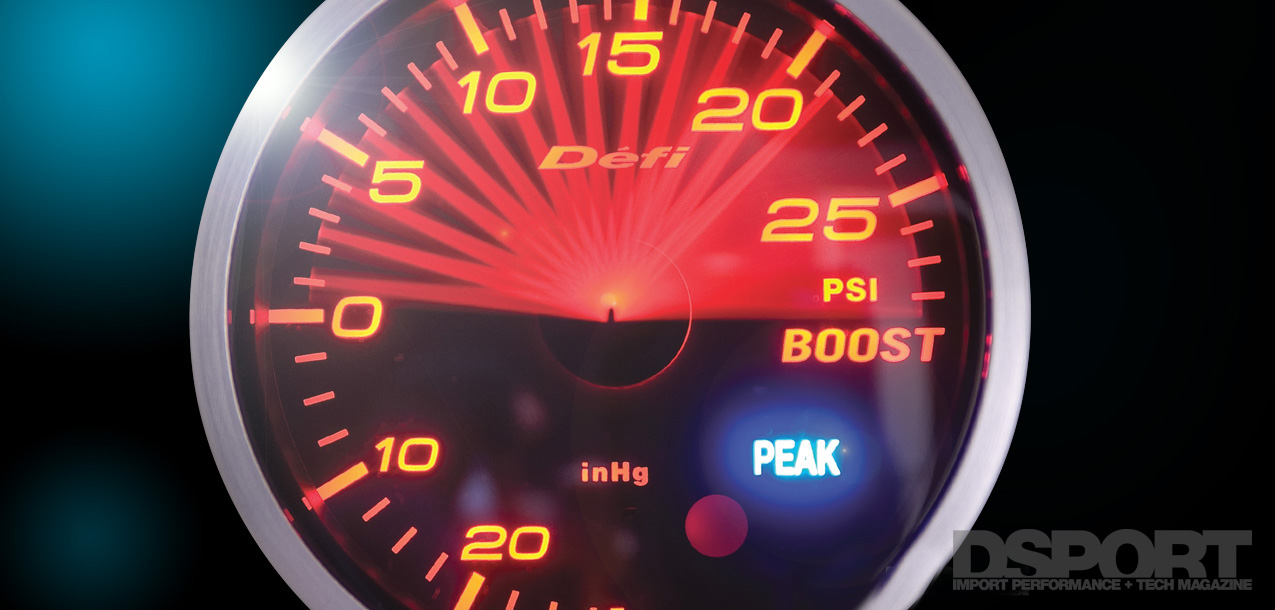SIDEBAR: WASTEGATE TECH 101
Wastegates are the mechanical devices that keep your boosted engine in check. Receiving either a direct or manipulated (when a boost controller is used) intake manifold pressure signal, wastegates lift their valves to channel exhaust flow away from the turbine section of the turbocharger when the desired boost level is realized.
How Much Wastegate Do You Need?
[pullquote]IF YOU HAVE ENOUGH WASTEGATE, DON’T FIX WHAT’S NOT BROKEN[/pullquote]Whenever you improve the flow of exhaust gases through the turbine section of the turbocharger, the dependence on wastegate flow diminishes. Increasing the area/radius (A/R) of the turbine housing or size of the turbine wheel, reduces the exhaust load that the wastegate will need to handle.
Stepping up the compressor’s flow with larger compressor wheels and housings, as well as improving the volumetric efficiency and rpm potential of the engine, will generally increase the exhaust load on the wastegate.
The ultimate question of “how much wastegate do you need?” is very difficult to answer. A number of both static and dynamic factors will influence the answer, but our recommendation is simple. If you have enough wastegate (your boost pressure doesn’t creep at high rpms past the level you want), don’t fix what’s not broken. If you don’t have enough wastegate, start looking at wastegates that will outflow your current one.
Turbo Boost Limitations
A turbocharger’s compressor is limited to a set flow rating based on its design. There are cases—especially when a factory turbo is used—that boost pressure cannot be maintained at higher engine speeds, regardless of the boost solenoid’s design and duty cycle. In these situations, the compressor simply cannot maintain the pressure for the amount of flow required. It’s just like when a fuel pump reaches its flow limits and fuel pressure begins to drop. The cure for this issue is simple: Select a new turbocharger with a higher flow or horsepower capacity.
Boost Pressure Creep
[pullquote]HAVING THE BOOST CREEP ABOVE THE TARGETED BOOST LEVEL CAN ALSO OCCUR DUE TO MECHANICAL LIMITATIONS OF THE WASTEGATE SYSTEM[/pullquote]In other applications, having the boost creep above the targeted boost level can also occur due to mechanical limitations of the wastegate system. In these instances, even a fully open wastegate doesn’t channel enough exhaust flow away from the turbocharger, and boost continues to increase as engine speed and power increase. The solution for this issue requires a higher flowing wastegate to channel away the excess exhaust if the turbocharger will remain unchanged. An alternative is to choose a new turbocharger with a higher capacity turbine section.
Bottom Line
The enthusiasts of today’s desire to have it all and technology’s track record of making the impossible possible, mean that knowledge is power. To design or upgrade a boost-control system for maximum performance, one must first understand the history of boost control and the basic components of a modern boost-control system. While turbocharger manufacturers have incorporated a host of technologies to significantly increase performance, peak boost response, power output and reliability cannot be realized without a proper boost control solution. In our next installment of the “Science of Boost,” we’ll take a look at the latest turbocharger technologies that are influencing boosted performance.


